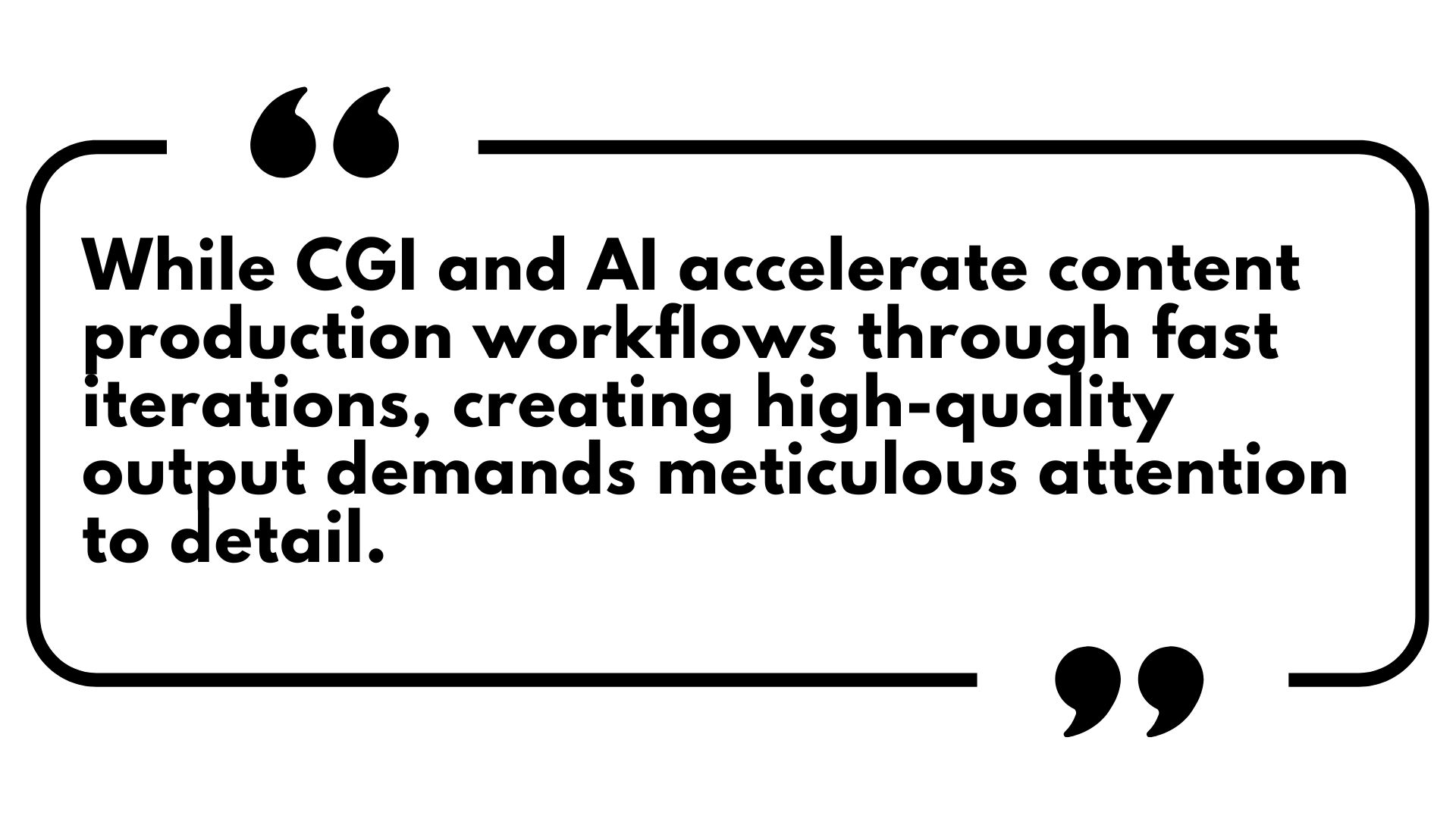The Future of Creative Branding in the era of CGI and Artificial Intelligence
The Context
In the digital revolution era, the future of creative branding holds immense potential for success.
Brands today face a substantial demand for creative content. It’s no longer sufficient to promote a service merely; brands must weave a narrative to forge connections with their customers. They must share values and philosophies beyond their products, finding an audience that resonates with them.
The Communication Tools
In my view, nowadays the most invaluable tools for conveying a product brand include computer-generated imagery (CGI), still photography, and video production. While I anticipate that augmented reality (AR) experiences may replace many of these tools in the future, CGI and artificial intelligence (AI) will remain pivotal. CGI serves as a tool to pre-visualize and enhance the visualization of products, allowing them to exist in extraordinary worlds and showcase features and benefits that would be challenging to communicate otherwise. CGI will eventually replace product photography, leading to a surge in demand for video productions by brands. With tools like Unreal Engine, CGI will be indispensable for real-time product displays and architectural visualization scouting, real-time and post-produced hybrid virtual productions.
Alongside these advancements, AI is rapidly finding a place in the creative branding landscape. Currently functioning as a complementary tool to CGI, AI’s swift evolution demands our attention. It’s primarily used to generate creative visual solutions and aids in the previsualization of video content. As AI evolves, it will become an indispensable tool for both creatives and brands, offering solutions such as crafting captivating scripts and generating voiceovers in multiple languages.
Quality over Quantity
Despite envisioning a bright future for creative branding with CGI and AI, I caution against the easy mistake of prioritizing “quantity over quality.”
AI, in particular, tends to generate numerous outputs from a single input. While this can be inspirational, mismanaging AI may lead to inconsistent outputs, creating distractions for customers and failing to add value to the brands and products being promoted.
While CGI and AI accelerate content production workflows through fast iterations, creating high-quality output demands meticulous attention to detail.
Crafting a product aligned with brand values, effectively communicating to the right audience, and serving as a potentially viral communication tool takes time and iterations.
Focusing on these aspects necessitates open dialogue and collaboration among creative minds.
Final thoughts
The potential and possibilities in CGI and AI for creative branding are vast. However, it’s crucial to be mindful, especially with AI, which can generate outputs lacking strategy and consistency.
Failing to manage AI properly may dilute the focal points and values crucial for establishing deeper relationships with modern customers.
Maintaining top-quality outputs is more than ever fundamental for elevating the brand and working effectively.
This article is written by Gabriele Ricci, Creative Motion Director

Gabriele Ricci
Creative Motion Designer | CG Director | Professional Partner in Motion Design and Creative Branding
Gabriele Ricci is an award-winning Creative Motion Designer and CG Director who collaborates with global companies, international agencies, and brands.
His distinctive superpower is a blend of creative strategy, art direction, and technical expertise. This enables him to serve as a professional partner, leading motion design projects from initial concept to final delivery.
With his personal brand RICCI- Design in Motion®, he created premium video content such as digital marketing campaigns for Emporio Armani, the 3D video promo for the celebrity book of Arnold Schwarzenegger by Taschen, or top-quality digital marketing video for brands such as Ray-Ban and Oakley.
Author Profile
- admin
Latest Posts
 Interview and Guest PostJuly 25, 2024Unlocking the Power of Generative AI in Marketing
Interview and Guest PostJuly 25, 2024Unlocking the Power of Generative AI in Marketing Interview and Guest PostJuly 18, 2024Sustainability in Advertising – Going Green in the Digital Age
Interview and Guest PostJuly 18, 2024Sustainability in Advertising – Going Green in the Digital Age Interview and Guest PostJuly 10, 2024Beyond the Buzz: Real-World Digital Transformation
Interview and Guest PostJuly 10, 2024Beyond the Buzz: Real-World Digital Transformation Interview and Guest PostJuly 5, 2024Retail Media Networks: What is your Audience’s True Worth?
Interview and Guest PostJuly 5, 2024Retail Media Networks: What is your Audience’s True Worth?










